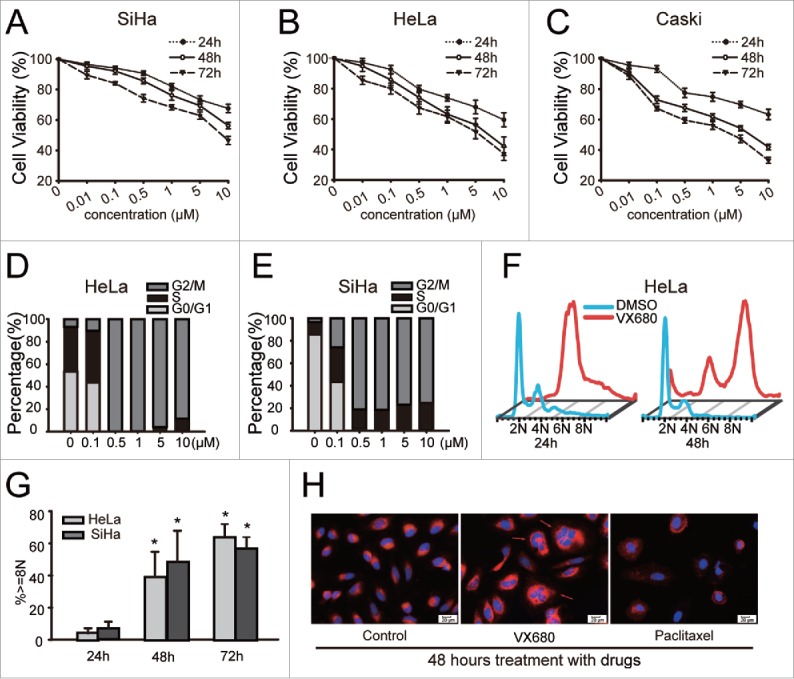Figure 1.

VX680-induced growth inhibition and cell cycle arrest in cervical cancer cell lines. (A, B, C) VX680 induced cell growth inhibition in dose- and time- dependent manners in cervical cancer cell lines. Cell viability was measured using the Cell Count Kit-8 (CCK8) assay following VX680 treatment. The results are presented as the percentages of viable cells in the VX680 treatment group compared with the DMSO treatment group. The graphs illustrate the means ± the SDs of triplicate results. (D, E) Cell cycle distributions of the HeLa (D) and SiHa (E) cells after 24-h exposures to various concentrations of VX680 (0.1–10 μM). (F) A time-course study of the effects of VX680 on cell cycle progression. Polyploidy was induced after a 48-h treatment with VX680. (G) Quantification of the polyploidy induced by VX680. The cells were treated with 500 nM for 24, 48 or 72 h, and the DNA contents were measured by flow cytometry. (H) VX680 treatment caused abnormal cytokinesis. HeLa cells were treated with DMSO, VX680 (500 nM), or paclitaxel (1 μM) for 48 h and were then stained with Hoechst-33342 and the membrane probe Dil to visualize the nuclei (blue) and membranes (orange red), respectively. Abnormal cytokinesis was identified by the multinuclearity (red arrows). Scale bar, 20 μm.
